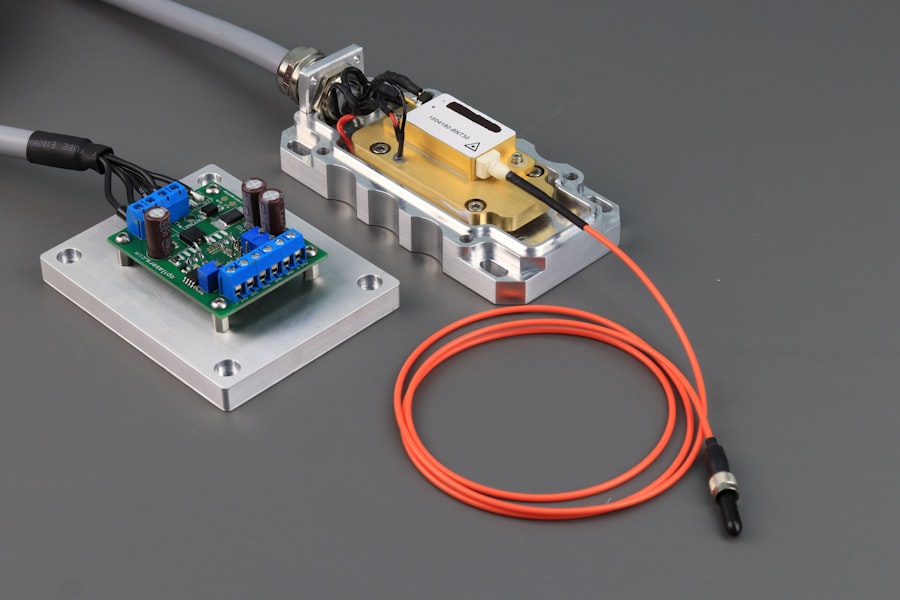Laser hair removal is a popular cosmetic procedure that utilizes concentrated beams of light to target and eliminate unwanted hair. The process works by emitting a specific wavelength of light that is absorbed by the pigment in the hair follicles. This absorption generates heat, which damages the follicle and inhibits future hair growth.
As you consider this option, it’s essential to understand that laser hair removal is most effective on individuals with light skin and dark hair, as the contrast allows the laser to target the hair more effectively. The procedure typically involves multiple sessions, as hair grows in cycles, and not all hair is in the same growth phase at any given time. During your initial consultation, a trained technician will assess your skin type, hair color, and overall health to determine the best approach for you.
They will explain the technology used, the expected outcomes, and any necessary precautions. Understanding this process can help you set realistic expectations and prepare for what lies ahead.
Key Takeaways
- Laser hair removal targets hair follicles with concentrated light to inhibit future hair growth
- Shave the treatment area before your appointment, but avoid waxing or plucking
- Research clinics that use FDA-approved lasers and have experienced, licensed technicians
- Avoid sun exposure and certain skincare products before your appointment
- Apply soothing aloe vera gel and avoid hot showers after your treatment to minimize discomfort
Preparing Your Skin for Laser Hair Removal
Before undergoing laser hair removal, it’s crucial to prepare your skin properly to ensure optimal results. Start by avoiding sun exposure for at least four weeks prior to your appointment. Tanning can increase the risk of complications and may affect the laser’s ability to target hair follicles effectively.
If you have recently tanned, it’s advisable to wait until your skin returns to its natural tone before proceeding with treatment. Additionally, you should refrain from waxing, plucking, or using depilatory creams for at least four weeks before your session. These methods remove hair from the follicle, which is counterproductive to laser treatment.
Instead, shaving is recommended a day or two before your appointment, as it leaves the hair shaft intact while allowing the laser to target the follicle directly. By taking these preparatory steps, you can enhance the effectiveness of the treatment and minimize potential side effects.
Choosing the Right Laser Hair Removal Clinic

Selecting the right clinic for your laser hair removal is a critical step in ensuring a safe and effective experience. Start by researching clinics in your area and reading reviews from previous clients. Look for establishments that are accredited and staffed by licensed professionals who specialize in laser treatments.
A reputable clinic will prioritize safety and hygiene, using FDA-approved equipment and following strict protocols. During your initial consultation, don’t hesitate to ask questions about the technology they use, the qualifications of their staff, and their experience with similar cases. A good clinic will be transparent about their procedures and will take the time to address any concerns you may have.
Trust your instincts; if something feels off or if you feel rushed during your consultation, it may be worth exploring other options.
Preparing for Your Laser Hair Removal Appointment
| Aspect | Information |
|---|---|
| Shaving | Shave the area to be treated 24 hours before the appointment |
| Sun Exposure | Avoid sun exposure and tanning beds for at least 2 weeks before the appointment |
| Skin Products | Avoid using any skin products with retinoids or acids on the treatment area |
| Medication | Inform the technician about any medications or supplements being taken |
| Consultation | Attend a consultation appointment to discuss expectations and potential risks |
As your appointment approaches, there are several steps you can take to ensure you are fully prepared for your laser hair removal session. First, confirm your appointment time and arrive early to fill out any necessary paperwork. This will give you a chance to relax and mentally prepare for the procedure.
It’s also wise to wear loose-fitting clothing on the day of your appointment to avoid irritation on the treated area. On the day of your session, avoid applying any lotions, creams, or deodorants to the area being treated. These products can interfere with the laser’s effectiveness and may increase the risk of skin irritation.
If you have any concerns or questions about what to expect during the procedure, don’t hesitate to discuss them with your technician beforehand. Being well-informed can help alleviate any anxiety you may feel.
Aftercare Tips for Laser Hair Removal
After your laser hair removal session, proper aftercare is essential for achieving the best results and minimizing side effects. Immediately following treatment, you may experience some redness or swelling in the treated area, similar to a mild sunburn. Applying a cool compress can help soothe any discomfort and reduce inflammation.
It’s also advisable to avoid hot showers, saunas, or intense workouts for at least 24 hours post-treatment to prevent further irritation. In the days following your session, keep an eye on the treated area for any signs of adverse reactions such as excessive redness or blistering.
Additionally, it’s important to continue avoiding sun exposure and use a broad-spectrum sunscreen on the treated area when going outdoors. This will protect your skin and help prevent pigmentation changes.
Managing Pain and Discomfort during Laser Hair Removal
While many people report minimal discomfort during laser hair removal, it’s natural to feel some level of pain or sensitivity during the procedure.
To help manage any discomfort, many clinics offer topical anesthetics that can be applied before treatment.
Discuss this option with your technician if you are concerned about pain. During the procedure itself, some lasers come equipped with cooling devices that help minimize discomfort by cooling the skin as the laser is applied. If you find yourself feeling anxious or uncomfortable during treatment, communicate with your technician; they can adjust settings or take breaks as needed to ensure your comfort throughout the session.
Potential Risks and Side Effects of Laser Hair Removal
Like any cosmetic procedure, laser hair removal comes with potential risks and side effects that you should be aware of before proceeding. Common side effects include temporary redness, swelling, or mild discomfort in the treated area. These symptoms typically subside within a few hours to a few days after treatment.
However, more serious side effects can occur in rare cases, such as blistering, scarring, or changes in skin pigmentation. To minimize these risks, it’s crucial to choose a qualified clinic and follow all pre- and post-treatment instructions provided by your technician. If you have a history of skin conditions or are taking medications that affect your skin’s sensitivity, be sure to disclose this information during your consultation.
Being open about your medical history can help your technician tailor their approach to suit your needs.
Long-Term Maintenance and Follow-Up Care for Laser Hair Removal
Once you have completed your initial series of laser hair removal sessions, long-term maintenance becomes an important aspect of sustaining your results. Many individuals find that they require touch-up treatments every six months to a year to maintain smooth skin and prevent regrowth. Your technician will provide guidance on how often you should return based on your individual response to treatment.
In addition to regular follow-ups, maintaining healthy skin is essential for long-term success. Continue practicing good skincare habits by moisturizing regularly and protecting your skin from sun exposure. If you notice any changes in hair growth patterns or experience any unusual symptoms after treatment, don’t hesitate to reach out to your clinic for advice.
Staying proactive about your skin health will help ensure that you enjoy lasting results from your laser hair removal journey.
If you are looking for more information on how to prepare for laser hair removal, you may want to check out this article from Allure Dermatology. They provide expert advice on what to do before your treatment to ensure the best results. For more tips and insights, you can visit their website here.
FAQs
What is laser hair removal?
Laser hair removal is a cosmetic procedure that uses a concentrated beam of light (laser) to remove unwanted hair. The laser targets the pigment in the hair follicles, damaging them and inhibiting future hair growth.
How do I prepare for laser hair removal?
Before your laser hair removal treatment, it is important to avoid sun exposure and tanning beds for at least six weeks. You should also avoid plucking, waxing, or electrolysis for six weeks prior to the treatment, as the laser targets the hair roots, which are temporarily removed by these methods.
Is there anything I should avoid before laser hair removal?
Before laser hair removal, it is important to avoid using any creams, lotions, or makeup on the area to be treated. Additionally, it is recommended to shave the area the day before the treatment, but not to wax or pluck the hair.
What should I expect during the laser hair removal procedure?
During the laser hair removal procedure, a handheld device will be used to deliver the laser pulses to the treatment area. You may feel a slight stinging or snapping sensation as the laser targets the hair follicles. The duration of the treatment will depend on the size of the area being treated.
Are there any potential side effects of laser hair removal?
Some potential side effects of laser hair removal may include redness, swelling, and temporary discomfort in the treated area. In rare cases, blistering, scarring, or changes in skin pigmentation may occur. It is important to discuss any concerns with your dermatologist before undergoing the treatment.







